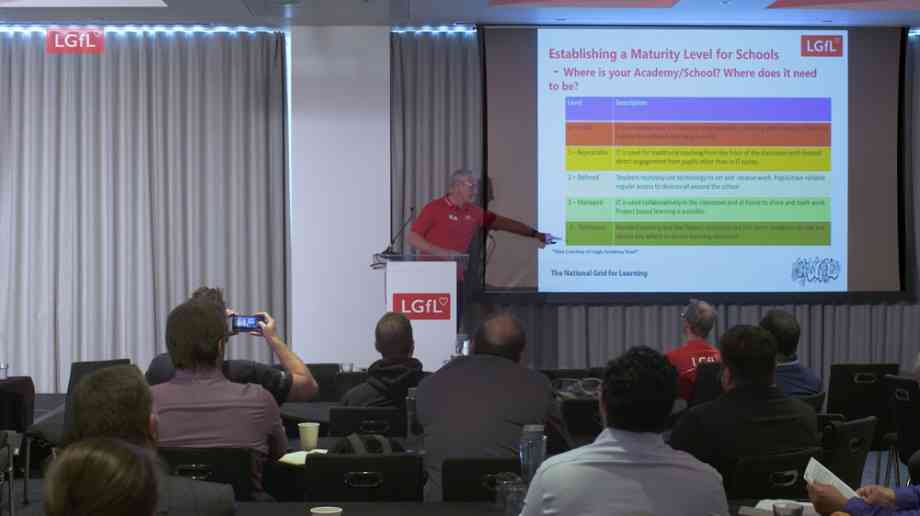
An IT strategy for schools
Richard Martin, digital transformation lead at edtech charity LGfL – The National Grid for Learning, provides a blueprint for building an effective IT strategy, with an outline of the key components and considerations to ensure that teachers, management, support staff, and students have the hardware, software, skills and understanding essential for tomorrow’s schools
The pandemic created many challenges for schools, including the rapid rollout and uptake of digital teaching and learning. In fact, it brought forward the advancement of digital adoption by at least 5 years. The benefits of mandatory digital platforms are clear to see, it’s vital to continue that trajectory and think strategically about your IT strategy going forward.
Every aspect of IT in school life should be examined and all stakeholders encouraged to engage in the process of assessing where their school is presently and how it can be improved and developed.
Key components
There are three key components that every school needs: ICT for teaching and learning - educational software, display and presentation equipment and devices for teachers and pupils; ICT for administration - back office software for HR, finance, payroll and facilities management; and ICT for development - management information systems, data analysis tools, reporting tools, fundraising and marketing software.
Outcomes for stakeholders
Carefully consider the outcomes you want to achieve with the technology for all your stakeholders. Teachers need reliable consistent IT to enable great teaching, save time and increase flexibility – providing opportunity for efficiently prepping tasks outside of the classroom or school. Pupils need a safe and secure digital environment, that caters for learning styles, improves engagement and plays an active role in preparing them for the digital world of work. Administrative staff need secure, reliable equipment that automates repetitious tasks, increases productivity, and improves communication with parents.
Tools for teachers
Teachers need to be able to plan with ease, using reliable online access to resources, anytime anywhere, using standard laptops; teach using reliable consistent classroom set ups and standardised display methods; mark and annotate electronically; enter data using a standardised MIS for Secondary and Primary schools; analyse data using a standard suite of consistent, accurate reports; and provide better pastoral care with simplified electronic processes for logging, recording and reviewing incidents.
Efficient systems for managers and support staff
The platform will enable your managers and support staff to choose to use a lightweight smaller laptop to work remotely, or a device with a larger screen at other times; use a single sign on to access key software and simplified electronic procurement processes; and engage with easy-to-access centralised information, collaborate and share best practice throughout the network.
School IT review
An important initial stage of the review is establishing your school’s level of ‘IT maturity’. Where is your school or trust now and where does it need to be?
The below rubric is courtesy of Leigh Academy Trust.
0 is the ‘Initial’ level. It means IT is unreliable and a hinderance to productivity, teaching and learning. There are risks to the network and data security.
1 is the ‘Repeatable’ level. It means IT is used for traditional teaching from the front of the classroom with limited direct engagement from pupils other than in IT suites.
2 is the ‘Defined’ level. It means teachers routinely use technology to set and receive work. Pupils have safe, secure, reliable regular access to devices all around the school.
3 is the ‘Managed’ level, meaning technology is used collaboratively in the classroom and at home to share and mark work. Project based learning is possible, and security threats are monitored and managed.
4 meanwhile is the ‘Optimised’ level. It means blended learning and the flipped classroom are the norm. Students can use any device anywhere to access learning resources.
Empower your team
Empower your team by agreeing the following key principles - that all IT investment will contribute to great teaching and learning, make the school more efficient, and improve safeguarding and compliance. Ensure your team agrees to secure the best possible service and value from suppliers, to enable better communication and collaboration across your school or trust, and to give guidance and support to help schools make the best choices regarding technology.
Engaging the stakeholders
Stakeholder engagement is a powerful tool, so start by creating an ‘inclusive’ steering group - seek critical friends and address dissenters head on.
Think carefully about the challenges each group of stakeholders face. Communicate with them regularly to keep everyone updated via email or via newsletters, give shout outs to unsung heroes. Be careful not to over commit to single demands.
Measure success
The final part of the process is to measure the strategy’s success so far – review your school’s maturity level again, seek customer feedback, financial reviews and reflect on lessons learnt.
The way forward
Once foundations are laid and confidence increases, encourage open discussion on the positives and negatives of the current status quo. Expectations will rise rapidly, and the technology and processes focussed on the key principles will continue to evolve naturally as needs arise and are addressed.
Latest News
19/12/2025 - 09:54
The Education Committee has expanded its ongoing inquiry into the early years sector to examine how safeguarding can be strengthened in early years settings.
18/12/2025 - 09:25
The UK will be rejoining the Erasmus programme in 2027, following a package of agreements with the EU.
17/12/2025 - 09:31
Ofqual has fined exam board Pearson more than £2 million in total for serious breaches in three separate cases between 2019 and 2023 which collectively affected tens of thousands of students.
16/12/2025 - 09:19
The average funding rates will increase by 4.3% for under 2s, and by almost 5% for 3-and-4-year-olds.
15/12/2025 - 10:30
Local colleges are set to receive £570 million in government funding to expand training facilities in areas such as construction and engineering.







